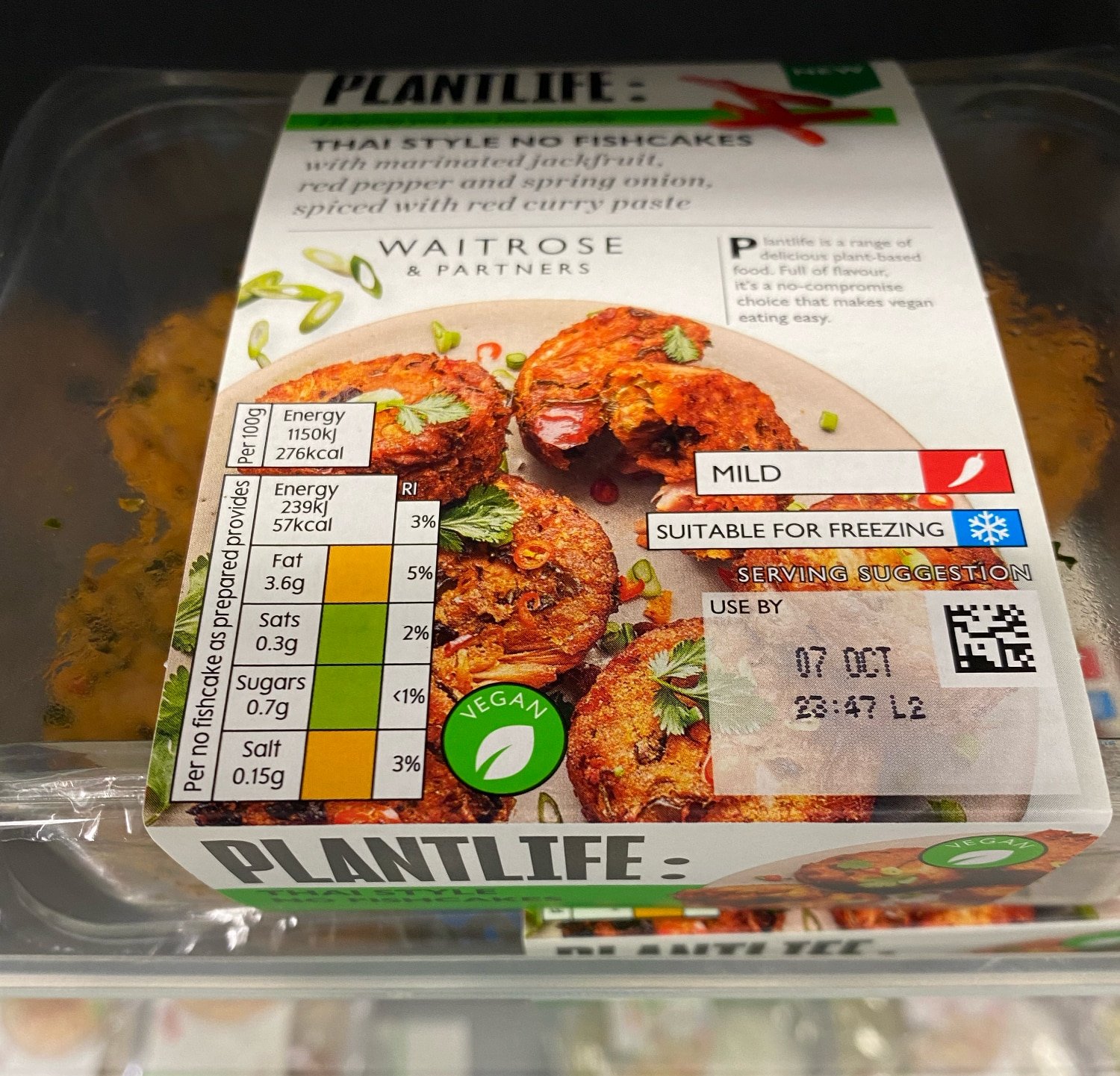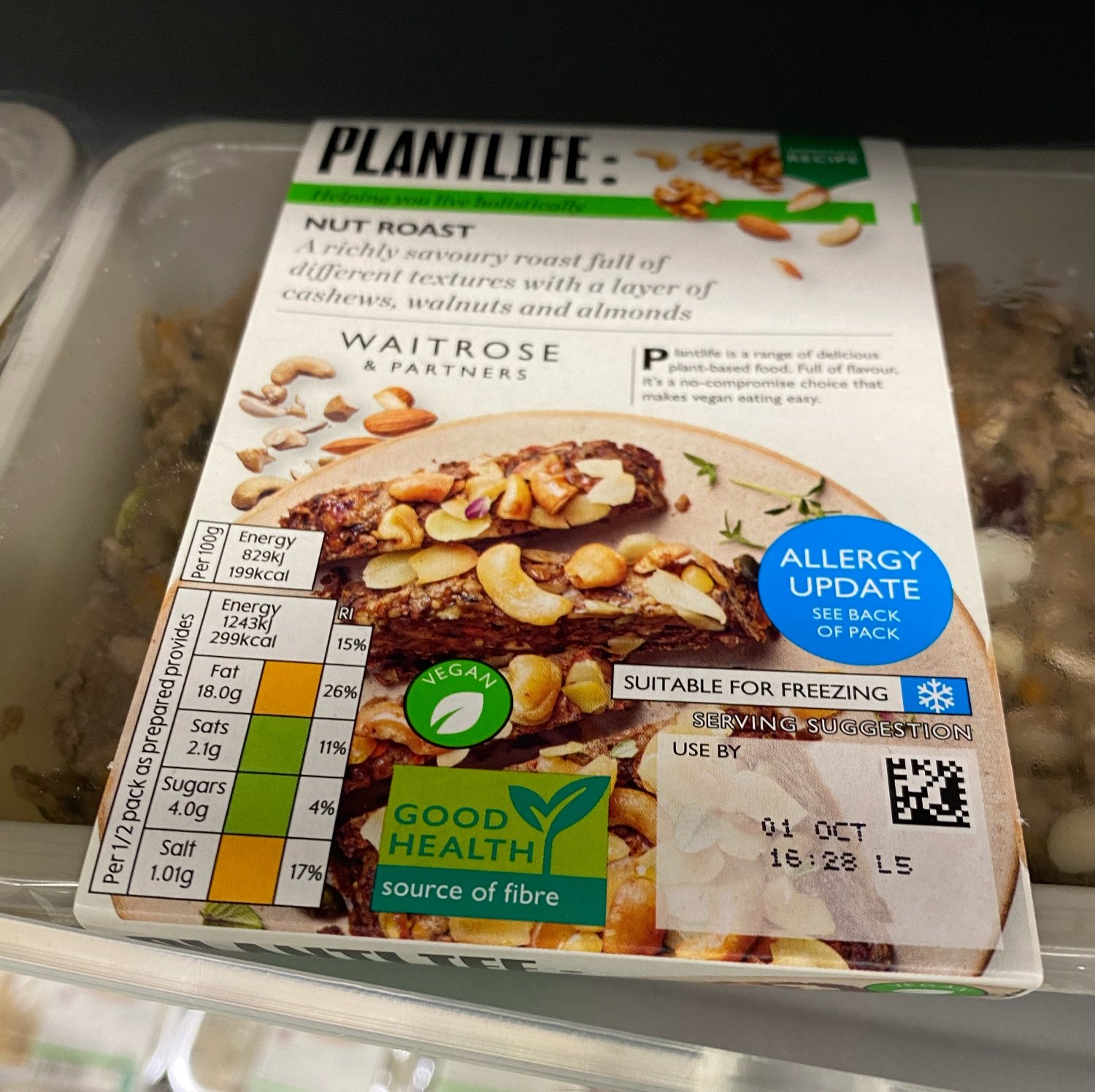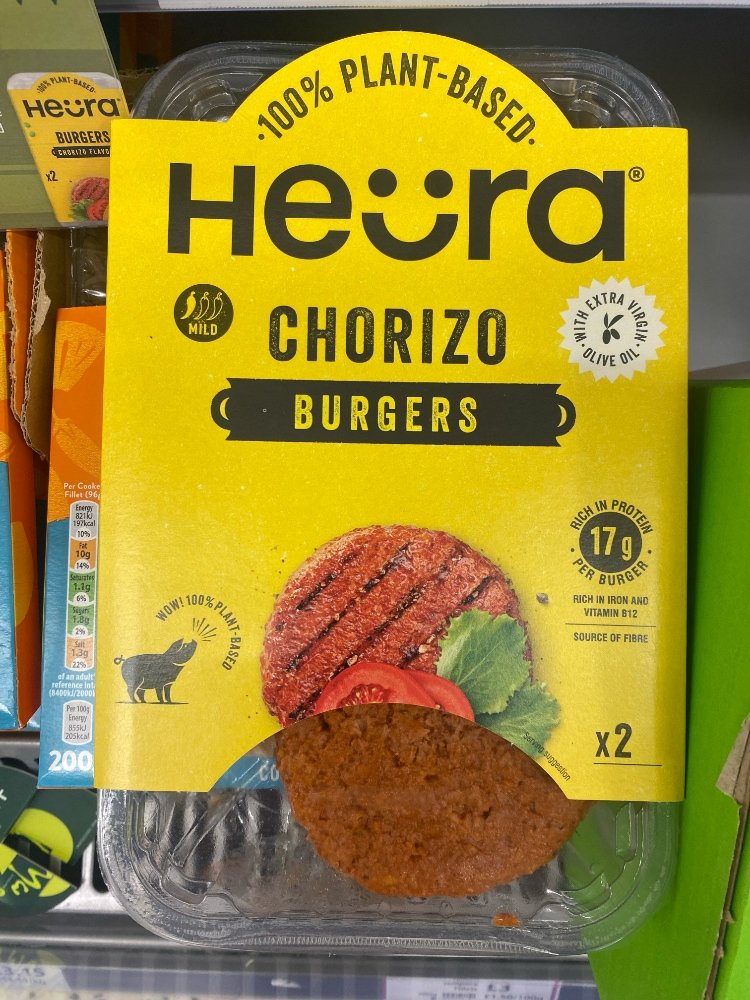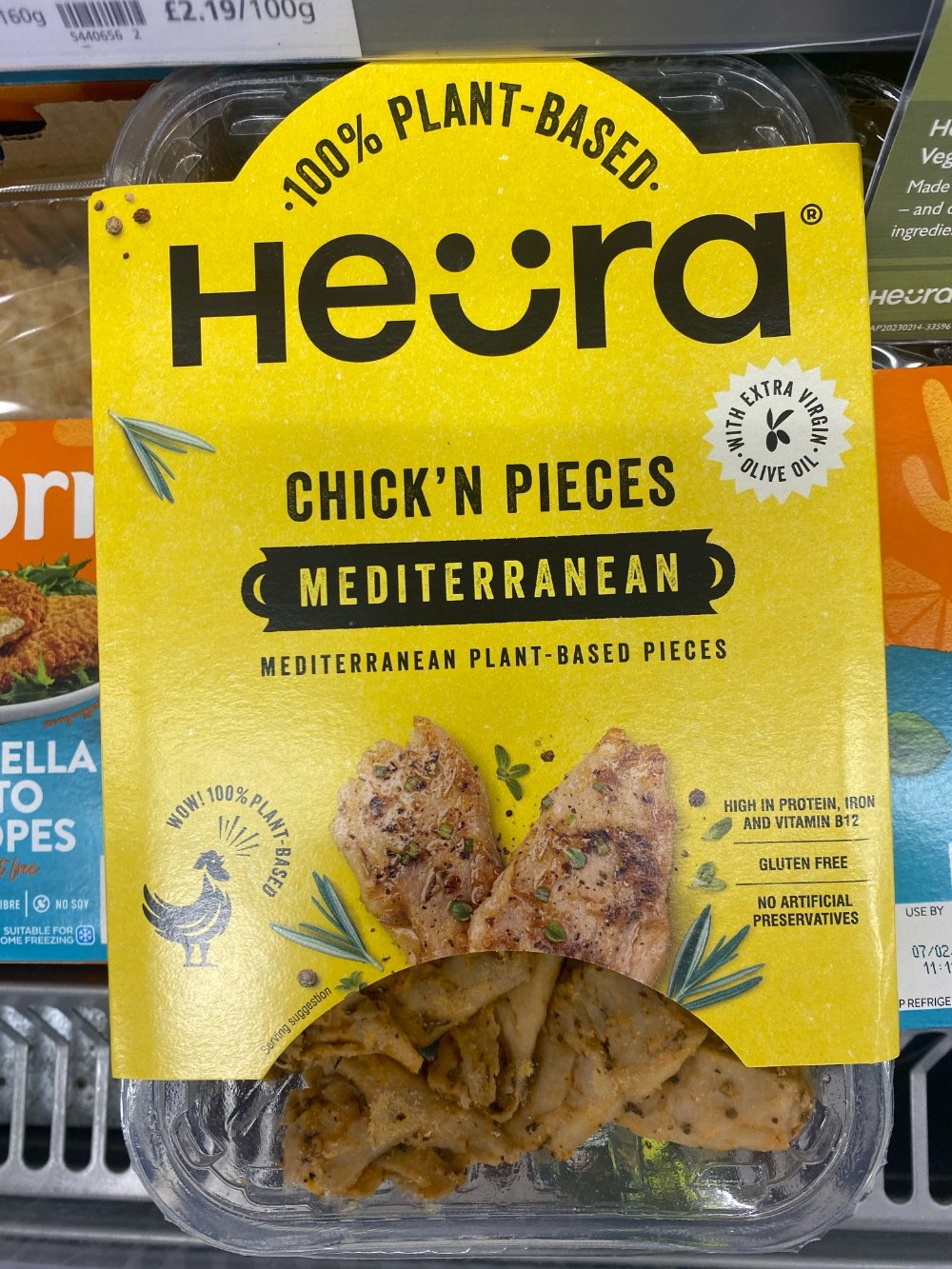Is being a flexitarian still a thing?
The meat-free category continues to grow globally. Flexitarian was term we encountered when completing some qual research several years ago. Are we now all flexitarian? Some desk research into the meat-free category in the UK.
A few years’ back we conducted some research for the UK’s leading tofu brand Tofoo to help them develop their next round of NPDs.
When this was conducted it seemed to be at the height of the growth in flexitarianism, a phrase coined by those in food marketing that defined those that were reducing their meat consumption in their diet, but weren’t willing to go all the way to become pescatarian or vegetarian. It was a quickly growing segment of the market.
Established brands like Quorn had and continued to create meat-free alternatives to everyday meat products, from mince and nuggets to bacon alternatives. New brands were appearing on the supermarket shelves at a rate that seemed weekly.
Now several years later, where do we find this segment of consumers?
Are they still regarded as flexitarians or have we all become flexitarians now?
How big is the meat free sector?
Do we still find these items in the “healthy living aisle”?
What are the triggers that make a type of customer choose one product over another?
We were interested to find out where the sector feels it is and thought we’d share what we found.
The meat free sector continues to grow, how big can it get?
There’s no doubt that it’s still a growing sector and doesn’t look like it’s slowing down.
“The global meat substitute market size was valued at USD 9.9 billion in 2021 and is expected to expand at a compound annual growth rate (CAGR) of 42.1% from 2022 to 2030.”
Meat Market Size Report and Forecast 2022-2030 - Grand View Research
But it’s a nuanced market and there's a lot to unpick. A lot of the market remains meat alternatives and less developed product areas remain the domain of a much smaller number of consumers. Products such as fish substitutes are still a very minor part of the overall sector and are yet to be developed into a range that is widely adopted.
What meat-free sub-categories are growing the fastest?
The largest sub-sector of the meat free market is the plant-based protein, items such as burger and sausage products remain the bulk of the market
“The plant-based protein segment held the largest revenue share of 34.8% in 2021 and is expected to maintain dominance over the forecast period.”
Meat Market Size Report and Forecast 2022-2030 - Grand View Research
However the mycoprotein segment is projected to grow at the fastest rate, with an expected growth rate of 43.2% from 2022 to 2023. This is expected due to the higher fibre and generally higher nutrient value of mycoprotein when compared to their plant protein alternatives. With a market that is predominantly driven by health concerns around eating too much meat, the nutritional and health benefits of alternatives are naturally going to play a significant role in product selection by consumers.
Innovation and collaboration continues to enable growth
With trends continuing to support growth in the sector, investment in new product development and development of geographical markets continues throughout the world.
“Investors have poured $16 billion into US plant based and cell based meat companies in the past 10 years. Including $13 billion alone in 2016-2017.”
Nielsen: Growing Demand for Plan-Based Proteins - Analysis Report Sept 2021
The cell based meat sector still has regulatory hurdles to overcome for acceptance around the world, with only a few countries making cultured meat available to consumers at this time. But it’s attracting plenty of investment, so we’re expecting to see some progress on the regulatory front over the coming years.
Part of the global growth is being achieved through partnerships between different organisations that can offer one geographical access to a market in an exchange for access to different innovation capabilities.
Tokyo based meat free food innovator, Next Meats, has teamed up with Indian based Vegan Meats to collaborate on food innovation and develop greater access to the largest global consumer food market, India. They’re hoping that by working together they can achieve rapid innovation in a growing sector and reach markets that they’d not have access to working independently.
“As India is the biggest consumer market in the world. Our products are high in protein, low in saturated fats with no added flavors and cholesterol. These items are just apt for people suffering from diabetes and blood pressure. We are excited to cater to our Indian consumers,”
What’s driving consumer interest in meat free alternatives?
So what are the main reasons that people are selecting to buy meat free products now? Are they the same reason that we found several years back when researching for Tofoo? As with market growth, it’s a nuanced set of reasons we find consumers turning to meat free alternatives.
So what are these driving factors? Is it environmental issues? Health issues? Animal welfare? Or are meat free alternatives cheaper than their meat counterparts? As you might expect, it’s not straightforward.
Impact of meat on health
It seems the primary reason remains personal health. By having less meat in our diets we’re seen as living healthy lives. However, as with nearly all of this area of food behaviour, it's complex to say the least with conflicting messages coming from producers and conflicting peer influences on both sides.
Lots of concerns remain, particularly with those that eat a predominantly meat based diet the majority of the time with the number of ingredients required to create the same levels of proteins in non meat alternatives versus the simplicity of animal based meat in its simplest form. Equally there remain lots of concerns about flavour and texture leading to less enjoyable eating experiences.
The desire for less meat in a diet is a self care driven motivation around an understanding that less meat can lead to a healthier you. But in similar self focussed motivation, the balance of achieving this better health is against a fear of less enjoyment in eating alternatives and in negative peer group feedback.
You can read more about this in The Food Standards Agency’s Food Psychologies Report on Public views around meat and dairy consumption. There’s some interesting conflicting dialogues going on here still that makes it hard as a food producer to target your customer.
Animal welfare
Unsurprisingly, animal welfare is one of the primary reasons for justification of food choices for those that had become vegan or strict vegetarians, but was less of an influencing factor for those that were regular meat eaters.
Developing products that were focussed on animal welfare messaging seemed to resonate well with those that had already made a shift in eating behaviour, but were not so good at capturing the attention of those that were at the beginning of making a consideration shift.
There seems to be another complex issue with consumers here. Most consumers do not wish ill of animals and would wish to see greater animal welfare. But some are more willing to accept the moral consequences of eating animals with the belief of better taste, texture and also a greater sense of eating something natural, rather than something that is manufactured. Which could be seen as an opportunity for some brands to take on with their product development and marketing.
Environmental impact
Whilst the consumer understanding of the environmental impact of large scale meat production is becoming a more commonplace topic of newspapers, it’s still a minority issue for the majority of consumers in the market for reduced meat or meat free products.
As expected, predominantly meat eaters see societal issues such as the impact of mass animal production on the environment as a lower priority when selecting what food choices to make. Vegans and vegetarians see this as another area to rationalise and justify their food choices.
As environmental concerns grow, and in particular those focussed on the impact of meat production, this may start to sway the behaviour of those that are not solely plant based food eaters.
Peer and ideological influence
The adages of “a balanced diet is important” and “eating meat and dairy makes you stronger” remain strong influencing ideas, without necessarily the supporting knowledge in consumers minds about how to achieve these goals or the why.
The impact of peer opinion also remains very strong on both sides of carnivores and vegan/vegetarians. With meat eaters fearing a backlash from their peer group around reducing meat and those that had opted to be vegan or vegetarian receiving equally negative peer group feedback on their eating habit choices. There are differences in this behaviour in social economic profiles and also geographically, with urban inhabitants receiving more positive support for reducing meat in their peer groups.
What does this look like on the shelves at supermarkets?
We’ve always got our eyes peeled for new brands entering the market and changes in those brands that are already present, from NPD to packaging changes. We thought we’d review a few of the products that are on our shelves today and reflect on the insight that we’d gathered above and what this might mean for these brands and their target audiences.
We’ve used the product packaging to highlight the triggers each brand has focussed on, to help them reach their target audience, but we’d expect these messaging focusses to remain consistent in all of their marketing channels and comms.
We’ve picked some supermarket own brands, some of the consistent producers and then some of the new products entering the market for comparison.
Supermarket Own Brands
Aldi - Plant Menu
Looks like Aldi have stuck to the “plant-based” route, although they seem to be mixing it up with meat substitution, with the “No” products in their Plant Menu range. They’ve included a “Vegan Friendly” mark, and the official Vegan Society mark, which from research could put some consumers off.
Product shots are very much in the traditional dinner replacement vein, with a clear play to simply switching this product out for your meat product. Overall and interesting mix of signals adopted by Aldi in their plant-based range.
Waitrose - PlantLiving (formerly PlantLife)
In a very similar fashion, Waitrose’s own range Plant Living is clearly plant based again. Some clearer good health attributes than the Aldi range using the nutrition traffic labelling system, indicating a healthier option, called out further by the inclusion of the “Good Health” in-store graphic. The products aren’t as traditional meat replacement, with some looking at the more fringe markets of fish replacement and then the traditional vegetarian products such as the Nut Loaf.
Waitrose we’re forced to change the name of the range, formerly PlantLife, to Plant Living after a trademark dispute, which in itself is an indicator of the market being highly competitive and growing battle for space for those in the plant based food category.
Sainsbury’s - Plant Pioneers
All of our supermarket own brands have clearly labeled or named their product ranges as “plant-based”, with Sainsbury’s calling their range Plant Pioneers. Most of the product packages have a “High in Protein” label to ensure they’re considered a suitable replacement to a meat alternative. Tesco’s take a similar line with their Plant Chef range, although their premium range is called Wicked Kitchen, but this could be regarded as targeting a more mature plant free audience.
Sainsbury’s seem to place themselves somewhere in the middle of the market, unsurprisingly. Looking to tap into the ingredient market with existing non-store brands such as Quorn, with their mince and chicken pieces replacements. But then mixing it up with prepared dinners such as Aloo Gobi Bakes and presenting a family vibe about their products.
Independent meat-free brands
Quorn
Quorn continues to occupy more space in the fridge and freezer sections in all supermarkets throughout the UK. But this doesn’t stop them from continuing to explore new product developments.
They have however seemingly developed a well targeted product packaging template. Using Meat Free, High Protein symbols and other health related icons. Cost saving triggers with economy packs etc. Allowing their products to comfortably occupy freezer space next to oven chips, fish fingers and frozen meat pies with no sense of moral requirements to select them as a product to go into any families supermarket trolley on a weekly basis.
Gardein
Gardein (Gardein being Garden + Protein) are a US based brand that are part of the Conagra portfolio, producing a range of meat free alternatives to regular ingredients products, such as mince, through to ready to eat products like chicken nuggets or battered fish fillets.
Using a proprietary labelling approach to key product details they called out the Protein per serving, calories and cooking time. We noticed that they also make a point of advertising the fact that their products are Non GMO. There’s a clean or somewhat sterile feeling to their packaging design that doesn't feel as “earthy” as many meat-free products, feeling more in the supplement market. If Sainsbury’s own range felt they had a family feel to them, these have more of a young professional feel to them, somehow?
Cauldron & THIS
We’ve brought these two together as they were snuggly placed next to each other in the fridge section. It’s also quite helpful to see them sitting next to each as a brand positioning comparison.
Cauldron have been a stalwart of the stricter vegetarian market for decades in the UK. They’re much more focussed on being “vegetarian” than necessarily claiming to be meat free. Interestingly they’ve got a very clear Carbon Neutral message on their packaging, which would align with one of the triggers for the clear vegetarian market or vegan market.
THIS, relatively new to the market in comparison to Cauldron . No direct messages about the environment here, other than calling out the 100% plant based, but priority given to Low Fat, High Protein and Source of Fibre, which would align with those choosing traditional meat replacement products for health reasons. THIS packaging feels very similar to how you’d see animal based meat displayed, with clear packaging. There seems to be no reference to the product being suitable to vegans on the front.
Heura
The relatively new kids on the block in the UK, Heura with meat like substitutes, although they like to call themselves “successors to meat”. Barcelona based startup with co-founders Bernat Ananos Martinez and Marc Coloma seem big, friendly advocates of plant based food, which always helps when you’re trying to grow a brand. No mention of vegetarian or vegan in the packaging, instead 100% Plant Based. Clear protein content and also calling out fibre, iron and added vitamin B12 to appeal to those looking after their health and looking for an easy protein replacement for meat.
We also noticed that Huera have noted that their product uses Extra Virgin olive oil, giving a premium feel, but also tapping into the “good taste” area of customer triggers. It’s bright, fun and looks like it should make you smile.
Pieminister
We were interested to include Pieminister in this review as they’re not a vegetarian producer by default, instead a pie producer that’s using their credentials as a valued brand to expand their market and potentially attract some of their existing customer base that are looking for a meat free alternative.
With this considered, you can see that the two things that are present on their packaging that we’ve discussed are “Plant Based” and “Great Taste”, there’s no mention of protein content, health benefits or nutritional values.
It’s indicative of the opportunity that all brands that operate in similar spaces see as available in the meat free category.
Beyond Meat
Spotted Beyond Meat in the supermarket I visited the other day for the first time. Whilst they started up in California a while back, with their first products hitting the shelves in 2012, it’s only in the last year that they’ve been making inroads in the UK supermarkets. A very simple packaging, but really clear and functional. Plant-based, meat replacement. The second largest font on the label is reserved for the protein amount per serving, in a similar fashion to what you’d expect to see on a supplement package.
Beyond Meat has raised over $122 million in startup funding so far, there’s plenty out there that see producers such as themselves as the future of the plant based market. However, it hasn’t all been smooth sailing for brands such as Beyond Meat. They wrote off nearly $6 million ($5.8 million) in costs last year after stopping production of a NPD for Beef Jerky, so they’re still finding their market and customer needs.
La Vie
La Vie is a French brand, that I’ve not encountered before, that’s filling a niche market - meat free bacon and lardons. Bright and cheerful packaging with a Great Taste Award to reassure consumers of taste focus in the product development. They’ll be going up against the longer established THIS for market share of the bacon replacement (Quorn also have a bacon product).
In comparing the two against each other (THIS and La Vie), both call out the 100% Plant Based, High in Protein, but La Vie leans more into the strict vegan/vegetarian customer profile with the “Vegan” suitability and the “Better for the Planet, with THIS leaning more the other way and going for a meat like approach to visual appearance.
Other than that, with a clearer focus on existing stricter vegetarian customers, there seems to be fun feel to the brand, celebrating the role the customer makes in living “the life” of a meat free eater.
So what does this all mean to meat free producers and brands? And, is flexitarianism still relevant?
We’ve reviewed just some of the insights that are available in the market for meat free brands and organisations, but there’s many more areas that can be explored and further insight developed.
It seems that there remains a demand for reducing meat in our diets but it’s a complex equation of needs. For us, flexitarianism and first coining came at a time when there was a shift in consumer behaviour to reduce meat in all of our diets, mostly for health reasons. Whilst this need still exists and still shapes consumer behaviour, flexitarianism has become the new norm. There are less 7 days a week meat and 2 veggers in our society now, many of us now have a meat free main meal in our weekly diet.
However, what useful things can we conclude from what we’ve discussed here?
Know your target audience
Given the complexity of the influencing factors on consumers in this market, more so than some other markets, it’s essential to know who your target audience is and how you're targeting them.
Are they meat eaters looking to reduce their meat intake or are they vegetarians looking to find an easier meal to cook?
Are they more looking to improve their health but don’t understand how plant proteins are developed as ingredients?
What are their triggers for selecting brands and products?
Focus on the things that have the greatest impact when developing NPDs
Once you know who you are targeting, bring focus to the things that are going to make your customers choose your product over a competitor's product.
Are you going to win them over if you call your product “plant based” of “meat free”?
Is it better to include a “Vegan Friendly” logo or not?
How important are the nutritional traffic light symbols to your product's popularity?
Tell your brand story
Are you a fun loving brand, or is it all about function over form?
Engage your potential customers in a way that wins them over, but also delivers all of the attributes that’s going to lead to a customer choosing you over a competitor.
Make sure you’re consistent. What are you looking like and talking about on social and web right now?
How we can help you…
References:
Food Standards Agency: A rapid review of the evidence on the factors underpinning the consumption of meat and dairy among the general public: https://www.food.gov.uk/research/behaviour-and-perception/a-rapid-review-of-the-evidence-on-the-factors-underpinning-the-consumption-of-meat-and-dairy-among-the-general-public
Food Standards Agency: Psychologies of Food Choice: Public views and experiences around meat and dairy consumption: https://www.food.gov.uk/research/behaviour-and-perception/psychologies-of-food-choice-public-views-and-experiences-around-meat-and-dairy-consumption
NIH: Mycoprotein: The Future of Nutritious Nonmeat Protein, a Symposium Review: https://www.ncbi.nlm.nih.gov/pmc/articles/PMC6554455/
Statista: Market revenue of plant-based meat worldwide from 2016 to 2027 - Dec 2022: https://www.statista.com/forecasts/877369/global-meat-substitutes-market-value
Grand View Research - Meat Substitute Market Size and Growth Trend Analysis 2022 - 2030: https://www.grandviewresearch.com/industry-analysis/meat-substitutes-market
Nielsen: Growing Demand for Plan-Based Proteins - Analysis Report Sept 2021: https://nielseniq.com/global/en/insights/analysis/2021/examining-shopper-trends-in-plant-based-proteins-accelerating-growth-across-mainstream-channels/
The Grover: Battle of the burgers: plant-based category report 2020: https://www.thegrocer.co.uk/category-reports/battle-of-the-burgers-plant-based-category-report-2020/647607.article
Food Institute :Investment in Lab-Grown Meat Intensifying - July 2022: https://foodinstitute.com/focus/investment-in-lab-grown-meat-intensifying/
Indian Retailer: Plant-Based Company Next Meats Forays into Indian Market, Launches Meat-Free Alternatives: https://www.indianretailer.com/news/plant-based-company-next-meats-forays-in-indian-market-launches-meat-free-alternatives.n12449



















